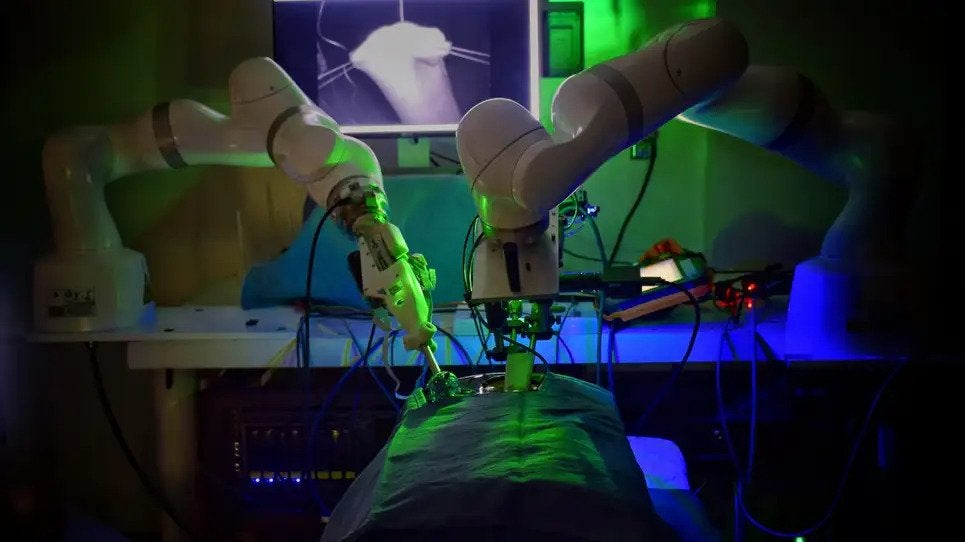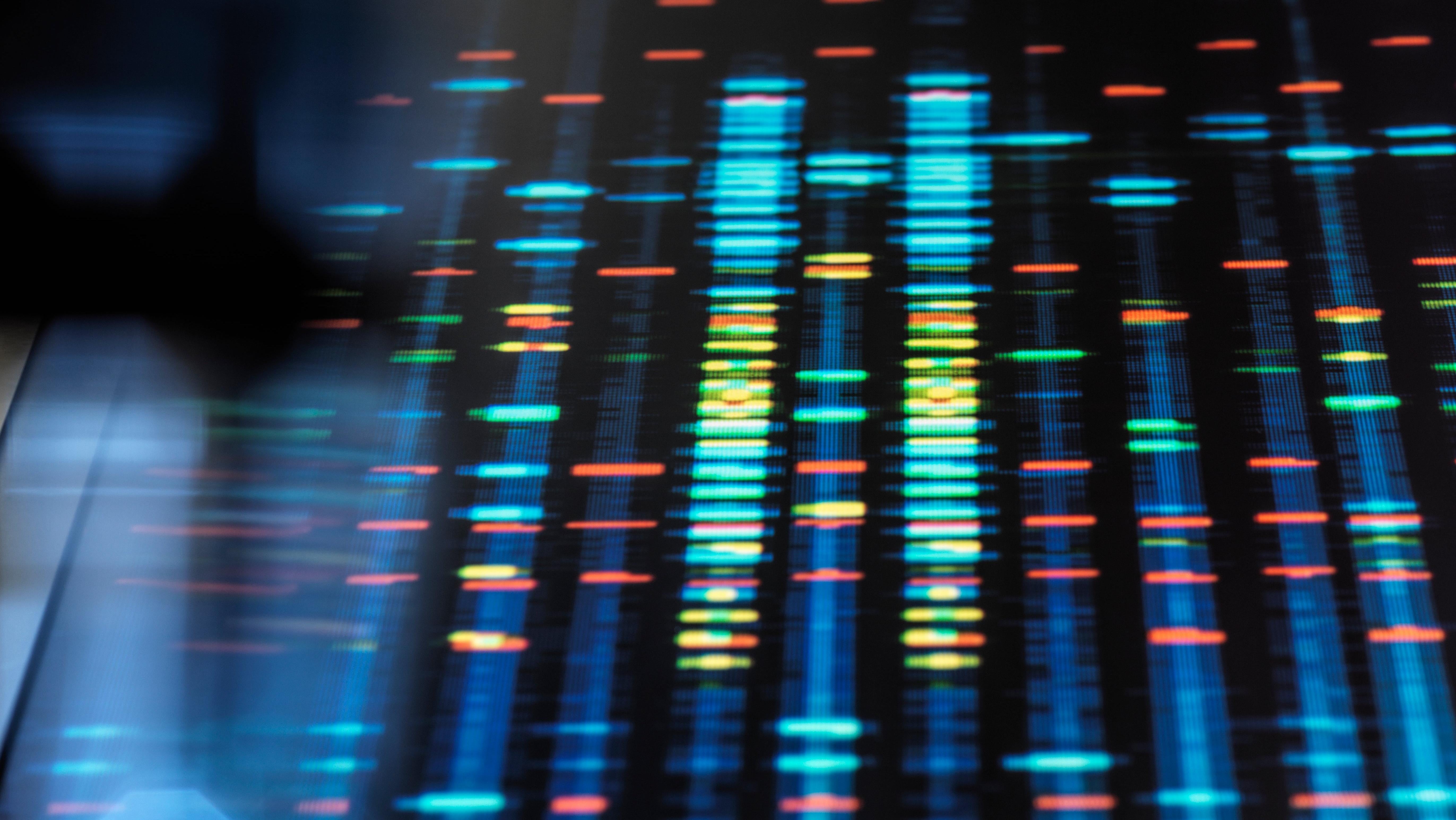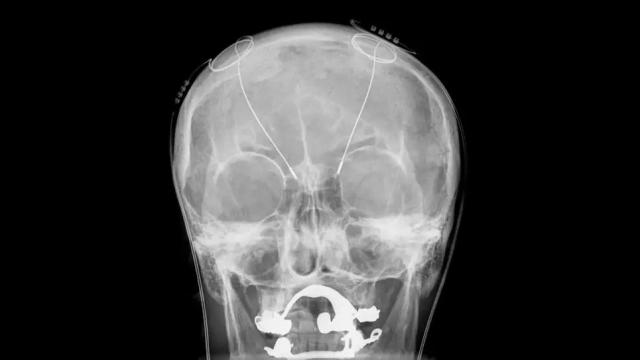Modern medicine has extended our lives and reduced suffering in all kinds of ways. Many of the impactful interventions we have available today have been around for a long time, though, such as antibiotics, most painkillers, and various forms of cancer screening. But every once in a while, scientists do come up with novel treatments that jump the line from “cool” to “whoa.” Here are five sci-fi medical innovations that are already here or close to fruition.
Advanced Robot Surgeons

Today’s robots aren’t quite as impressive or independent as the ones we see in science fiction, but we may now have a robot that can perform certain surgical procedures on its own. Earlier this year, researchers at Johns Hopkins published results showing that their Smart Tissue Autonomous Robot (STAR) could pull off a complex laparoscopic surgery in pigs that required it to reconnect the ends of an intestine. It even seemed to perform the task with greater precision than human surgeons.
For the foreseeable future, STAR and similar robots will likely only assist human doctors. But its developers envision a world where these bots can work on their own in emergency situations, such as treating trauma patients on the way to the hospital.
Stimulating the Brain to Treat Depression
The idea of using electricity to treat mental illness has understandably come with some stigma, given the grim and sometimes abusive history of “shock therapy” in the earliest days of psychiatry. But in the modern day, various methods of brain stimulation have shown real promise in improving depression and other illnesses that otherwise looked untreatable. These treatments, it’s theorised, can somewhat reset or stabilise the erratic brain activity associated with neuropsychiatric disorders. And scientists seem to be getting better at fine-tuning this tech.
Last October, a research team published results showing that their personalised deep brain stimulation technique, which involves implanting a pacemaker-like device in the brain, had successfully helped treat a woman’s decades-long bout with severe depression. “When I first received stimulation, the ‘aha’ moment occurred, I felt the most intensely joyous sensation, and my depression was a distant nightmare for a moment,” the woman, identified as Sarah, said at a press conference announcing the findings.
This technology, for now, is still very expensive, invasive, and likely only suitable for people without any other options. But in time, what we learn from patients like Sarah may lead to new discoveries about how the brain works and how to help people with depression.
Drug-Releasing Contacts

Sometimes, innovation doesn’t come from developing new and better drugs but from finding better ways to give them to people. In March, the FDA approved the first drug-eluding contact lenses, which release a payload of antihistamines over several hours to prevent or reduce itchy eyes. Eventually, this tech could be used to treat other eye conditions like glaucoma, infections, and cataracts.
Gene therapy

For decades, scientists have been hopeful about the idea of editing our genes to treat difficult or seemingly incurable ailments. We’re now finally starting to see these efforts pay off. Since 2017, the FDA has approved at least two gene therapy treatments meant to correct or replace harmful mutations that are directly causing illness. A related area of research is CAR T-cell therapy, which edits a person’s T-cells in the lab to make them better at fighting off some cancers; the cells are then infused back into the body.
In December, a small trial using gene therapy to repair the misshapen red blood cells of people with sickle cell disease seems to have passed with flying colours. For up to three years after treatment, the cells of these volunteers still appeared to have their corrected shape, and, most importantly, the people no longer experienced the episodes of severe pain and other symptoms common with sickle cell. The results of this and other research are looking so impressive that this may genuinely represent a bona-fide cure for the genetic disorder, which is thought to affect about 100,000 Americans.
Other upcoming applications for gene therapy may include a painful skin disorder known as epidermolysis bullosa (also called “butterfly disease”), hemophilia, and more types of cancers.
Genetically modified pig organ transplants

A long-sought goal of medicine is a steady supply of organs for those who need them. That dream now seems in reach. Last year, two different research teams successfully transplanted organs sourced from genetically altered pigs into brain-dead humans. And in January, a team from Maryland performed the world’s first transplant of a modified pig heart in a terminally ill patient. These pigs have been modified to become more compatible with human biology — for example, they no longer produce a sugar in their muscles that would set off the human immune system.
These first experiments have shown that the pig organs can survive the transplantation process without immediately being rejected by our immune system. But it will take clinical trials to prove that the technology can truly prolong the lives of recipients, and it may take even more time before these organs are as effective as those donated by humans (sadly, the first living patient to receive a pig heart passed away earlier this month). But given the ever-present organ shortage, one that leaves thousands of Americans dead annually, it’s a treatment that would still be life-saving for many in the near-future.
